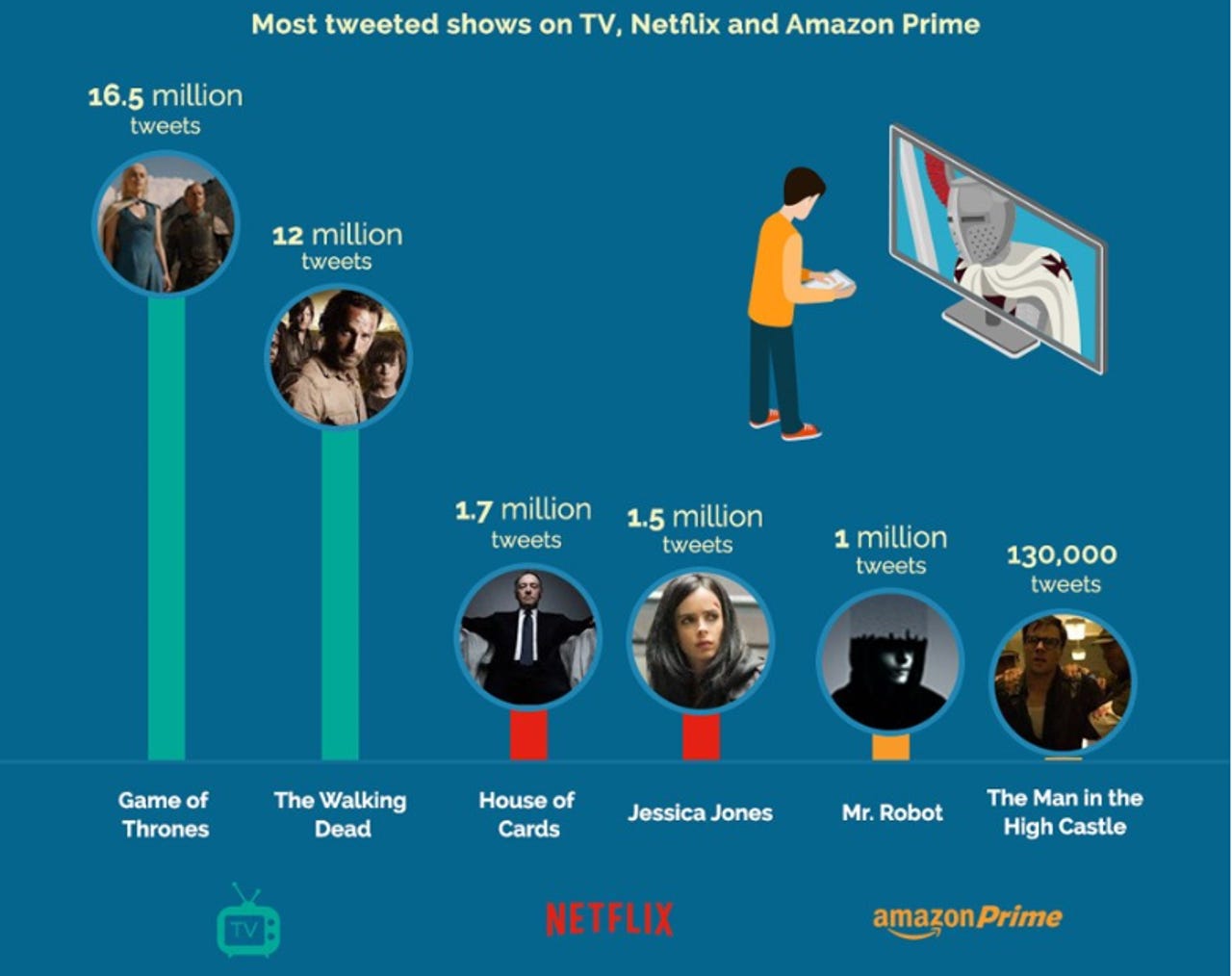How second screen viewing is affecting TV and social media

TV has gone social and viewers have evolved into 'media multi-taskers'. Multi-screen culture has been here for a while. Viewers consume media from a variety of different viewing platforms.
From smartphones and tablets to laptops and curved-screen TVs, viewers access their media, and simultaneously access social media to give our opinions about it.
European specialist electrical and telecommunications retailer Currys PC World has analysed the Twitter activity of the multi-screen generation.

Over a 12-month period, covering January 1st - December 31st 2015, it used Crimson Hexagon analytical tools to analyse 45,000,000 tweets.
The tweets were linked to 16 of the most internationally popular shows across a variety of networks for a better quantity and quality of data.
In doing so, it uncovered the activity of these multi-screen users to better understand this aspect of our 21st century life.
It wanted to discover what exactly would get viewers to jump from one screen to the other to chat about their favourite shows. Not only during transmission but in the days, hours and weeks before and after the shows were aired.
These shows included iconic cult favourites such as Game of Thrones and House of Cards.
Twitter searches were undertaken to establish a feel for language and hashtags being used to talk about the show.
The list was refined to incorporate seasons, major characters and major plot events and series milestones for each show.
Care was taken to not include phrases or hashtags that were not exclusive to the shows studied.
For example, the widely recognised acronym GoT (for Game of Thrones) was not used as it would have returned every Tweet containing the word 'got'.
House of Cards is also the title of a much-hyped single released by a Korean boy band in 2015.
Searches ran for all languages and all regions. Queries extracted data concerning gender, age and who the most prolific Tweeters were.
Data included posts by country, country per capita, per day, per days of the week, per hour, potential impressions per day, and top 10 handle and hashtag mentions. Word usage was also gathered.
The analysis showed that TV shows tend to have a clear 'peak' day of the week when the most Twitter content is generated.
Established shows beyond their first and second seasons tend to have higher levels of Twitter volume. Game of Thrones and The Walking Dead, versus Man in the High Castle and Daredevil for example.
Shows probably build up momentum with each subsequent season, translating into a larger fan base and a greater amount of Twitter content.
When a TV show has well-known and well-liked characters and actors and a shocking plot with plenty of twists and turns Twitter content increases.
Almost a third of the top 10 hashtags and handles used in tweets across the 16 shows reference the cast, crew and plot.
For Game of Thrones, top Tweeting countries were the United States, the UK and Brazil. British and Irish fans were more likely to Tweet about the show than US Tweeters per head of the population.
Perhaps they were drawn by the high quantity of British and Irish actors in the cast, including seasoned professionals such as Charles Dance and future stars such as Maisie Williams.
The majority of Twitter posts came from the age group 35 plus, although ages 13-17 were proportionately more likely to Tweet about the show.
Mondays and Sundays were the days which received the highest number of Tweets. In the US the show is aired on Sundays, and Monday in the rest of the world, implying that, for many, Game of Thrones remains a live TV event.
Big Data Special Report
The Season finale of Game of Thrones on 15th June generated 1,223,801 posts.
The death of Jon Snow split Twitter with those who mourned his departure and those who continue to believe in his return.
The start of the series, 13th April, which was the season premiere for all countries outside of the US, generated 822.238 posts with 571,960 posts tweeted when the show aired in the US on 12th April.
Episode 9, the penultimate episode of the series generated 558,569 posts. The term 'How to train your dragon' achieved more than 2,000 retweets.
Throughout 2015 Game of Thrones generated 16,463,944 posts in 2015 with The Walking Dead close behind at 12,125,715 posts.
Twitter gives analysts valuable insights into what gives a particular TV show online notoriety. It also highlights how the battle between traditional TV and newer streaming services such as Netflix and Amazon Prime is hotting up.
Understanding and inferring why some TV shows are more widely discussed in the Twitterverse than others, gives marketers a prime target to aim for.
Related content:
- Study shows people care more about data privacy but are doing less to protect themselves
- Lithium adds to its community platform with new Value Analytics offering
- Zignal Labs launches command center to drive social channel insights
- Brandwatch Crowns Amazon, NPR, Kaiser Permanente and Netflix as Social's most savvy brands